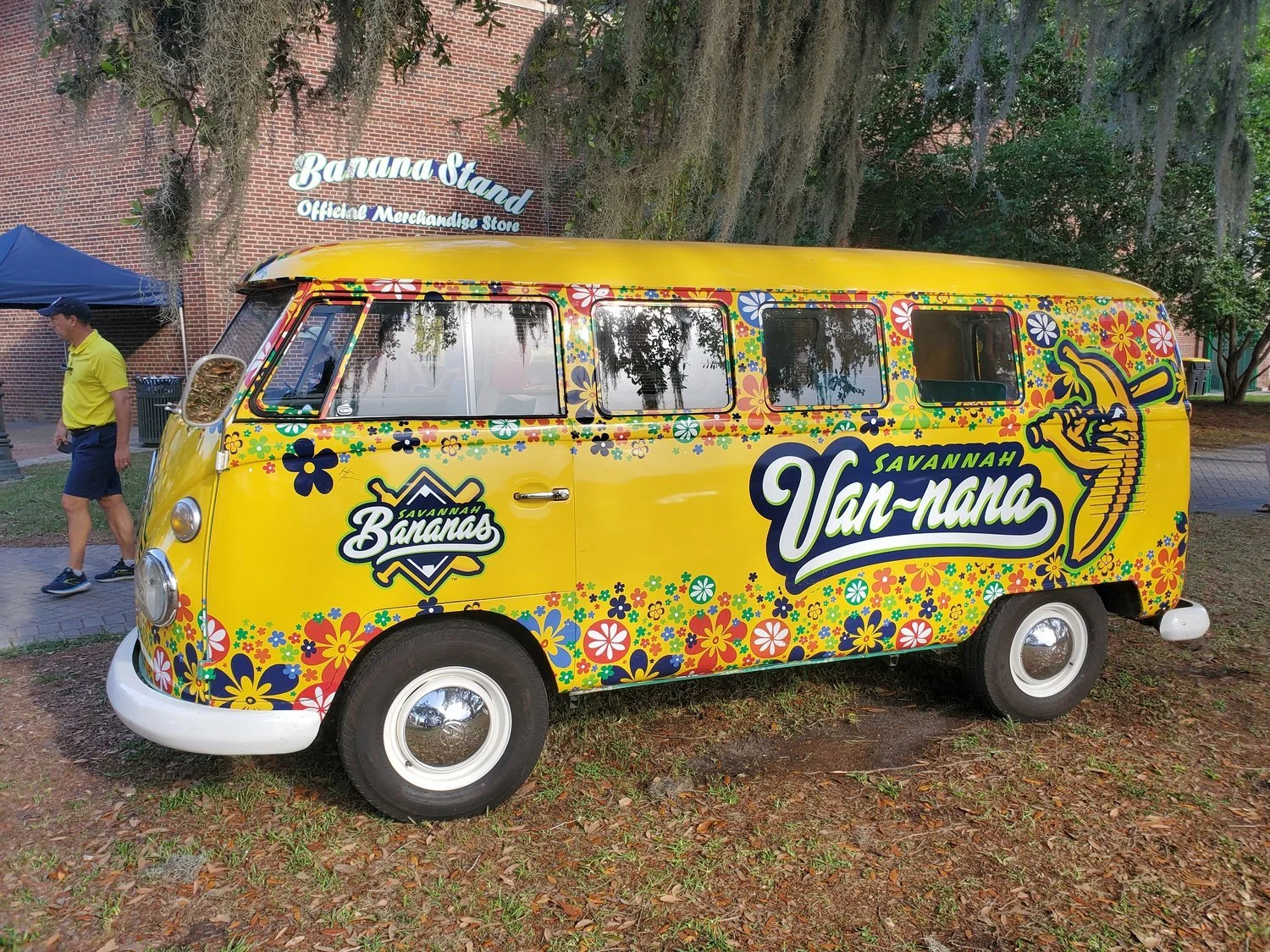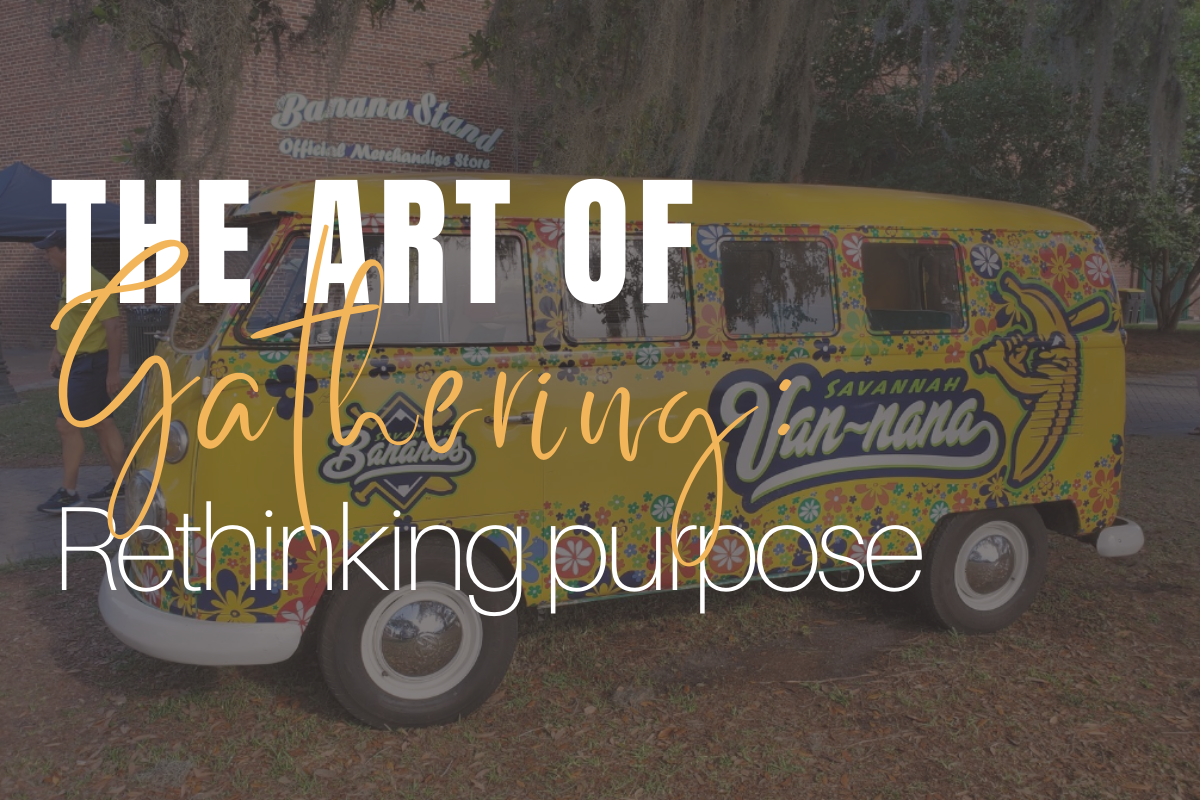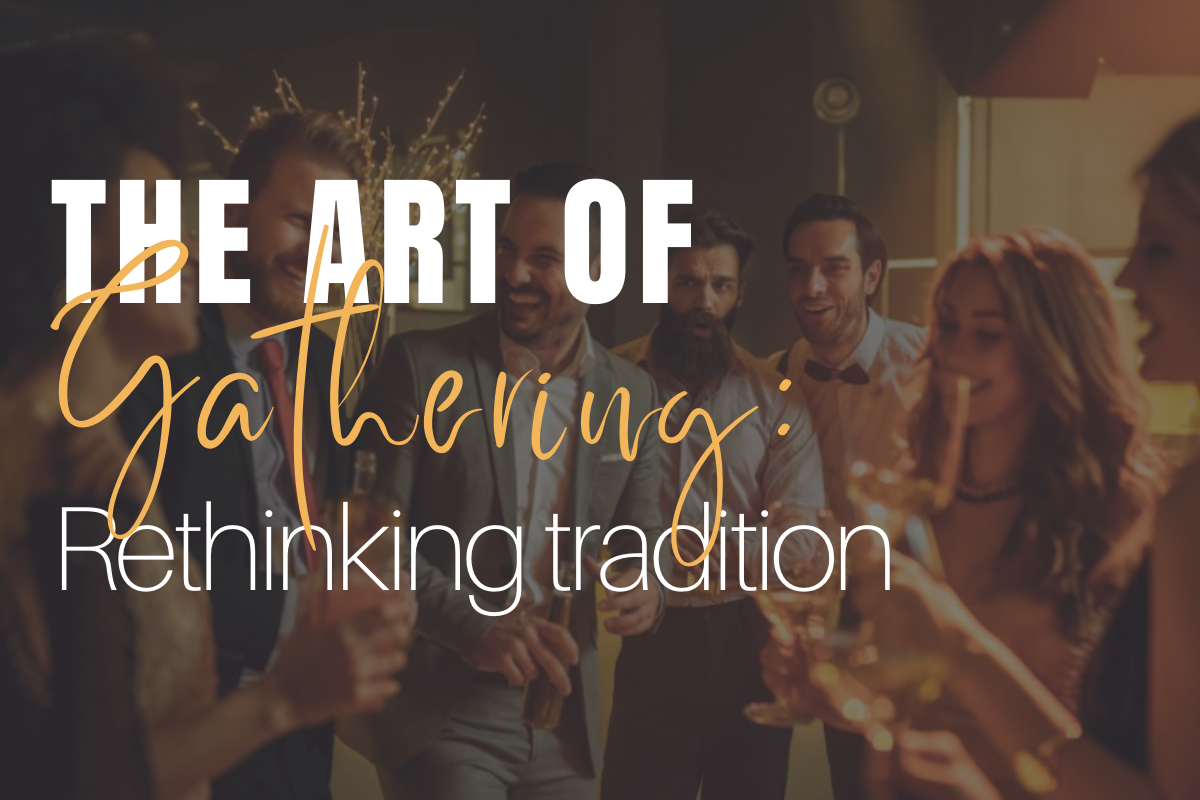The Art of Gathering: Rethinking purpose
It’s time to overhaul our thinking around what a classical music concert should be. We’ve based our traditions on nineteenth century societal hierarchy for far too long.
“When we don’t examine the deeper assumptions behind why we gather,” writes Priya Parker in The Art of Gathering, “We forgo the possibility of creating something memorable, even transformative."
The great paradox of gathering, she says, is that there are so many good reasons for gathering that we often neglect the crucial exercise of establishing the main purpose for coming together.
But isn’t the purpose of a classical music concert to enjoy classical music performed at its highest level? Think again. Classical music is the what, not the why. And when we conflate category with purpose, says Parker, “we end up gathering in ways that don’t serve us.”
Determining why we gather—moving from the what to the why—adds value for everyone involved. And every decision about that gathering, from format and etiquette to audience experience and marketing, becomes easier.
The great acceleration
Why is this such a crucial exercise for arts organizations? Put simply, we need to pivot to survive. This is not hyperbole. Between 1997 and 2017, we saw a 50% decline of live classical music audiences, according to the NEA.
Colleen Dilenschneider calls it negative substitution of the historic visitor: Our core audiences are aging, and they’re not being replaced by a younger or more diverse audience at a pace that allows for viability. The League of American Orchestras confirms this, pointing to a 2.8% decline each year in orchestral audiences.
And that was before COVID-19.
Michael Vincent recently highlighted NYU Stern School of Business professor Scott Galloway’s theory that the pandemic has accelerated pre-covid trends by ten years. As Vincent puts it, “Whatever trend affecting a music organization before the pandemic is now ten years ahead of schedule.”
Galloway’s not alone in this theory. McKinsey notes in The Great Acceleration, “industries and companies that started at the top of the curve before this crisis are proving to be resilient, while those that were at the bottom are accruing the biggest losses.”
How might this play out for classical music organizations? According to Aubrey Bergauer’s calculations, if Galloway’s acceleration theory proves true, classical music attendance will be halved after covid. “We should not be surprised to see a smaller audience,” says Aubrey, “unless we put plans in place to combat that trend.”
Researcher Colleen Dilenschneider agrees. “As of 2022,” she writes, “cultural organizations are in a make-or-break spot in the process of expanding audience profiles to change up the ‘type of person’ who visits them in the long term.”
Rethinking purpose
Successfully reversing the Great Acceleration for your organization starts with rethinking purpose. When you skip this critical step, you do your patrons a disservice and risk wasting valuable resources.
A gathering is a social contract. How are you holding up your end of the bargain? A truly meaningful and transformative gathering, says Priya Parker, doesn’t result from “making half-hearted gestures toward loftier goals.” Rather, it begins with the deliberate selection of a purpose that is unique and specific.
So how can arts organizations surrender their tight grasp on the lofty category of classical music in exchange for a meaningful purpose?
Shift from the what to the why. Keep asking why—and then ask it again—until you uncover a belief or a value.
Look for the need. Think about what needs your community shares that you are best positioned to help solve.
Specify a desired outcome. What do you want to be different because you gathered? Work backward from this goal.
Then what?
Make purpose your bouncer, says Parker. The purpose you select serves as a filter through which you and your team will determine every detail of that gathering.
Let’s explore the story of an organization who has found enormous success by rethinking their purpose and then committing to it 100%.
The purpose-driven baseball team
When Jesse Cole and his wife bought historic Grayson Stadium in Savannah, Georgia and began plans to launch a brand new minor-league baseball team, they quickly realized that they were in for a tough fight. Not only was the stadium in disrepair, but the city of Savannah showed no interest whatsoever in supporting a new baseball team. Other minor league teams had tried and failed. Nobody believed this time would be any different.
Jesse’s team pounded the pavement, but nobody wanted to buy season tickets. No businesses even wanted to sponsor the team. He and his wife were forced to sell their house and empty their savings account, but they forged ahead toward the opening of the 2016 season.
Everything changed when Jesse stopped to clarify the team’s purpose by shifting from what they were doing to why. He decreed that they were no longer in the business of baseball—they were in the business of entertainment.
“From this point on, we exist to make baseball fun,” he told his team.
It’s through this filter that they made every decision about how they would share the game of baseball with the city of Savannah.
First, they got rid of everything that fans hate about baseball.
They eliminated advertising in the stadium.
They made every ticket all inclusive of food and drinks.
They eliminated ticketing fees.
They changed the rules to make the game shorter and less slow.
Next, they added everything they could think of to make the Grayson Stadium experience as entertaining as possible. A pep band. A grandma-aged (nana) cheerleading squad. Players on stilts. A dancing first base coach. This would be an immersive experience for everyone in that stadium. Instead of keeping their distance, the players would interact with fans throughout the whole game. Their aim: celebrate everything. Think P.T. Barnum meets the Harlem Globetrotters.
Finally, they asked the city to name the team.
A few Savannah residents responded to the invitation to submit potential team names, and Jesse’s team selected the most outlandish suggestion of them all: the Savannah Bananas. Their mascot? A giant grinning banana wearing sunglasses.
Now they had their city’s attention. “They called it WHAT?" That’s a TERRIBLE name! What an embarrassment for our city!” The backlash was fierce, but suddenly everyone in Savannah was talking about them. And that was all they needed.
The Savannah Bananas sold out their opening night.
Then they sold out every single home game that season.
Then they won more games than any other team in the league.
In 2020, despite the restriction on baseball games amid the pandemic, the Savannah Bananas—incredibly—managed to remain profitable. How? They leaned even more into their purpose, and came up with hundreds of outside-the-box ideas, like putting out endlessly entertaining content on Youtube, starting a Facebook subscription, and building a drive-thru for their signature Slippery Bananas drink.
As one journalist put it, “After an unprecedented season that saw the minor leagues not play a single game, a quarter of those teams lose their MLB affiliations, and the major leagues declare losses north of $1 billion, [the Bananas] must be doing something right. [And they] made money while defying pretty much every accepted axiom about what it takes to run a successful professional sports operation.”
Today, the Bananas have 51,000 fans on their waiting list, are selling merchandise around the globe, and have launched a sold-out “World Tour” to bring Banana Ball to cities around the country. Their games are legendary for their never-before-seen stunts and hilarious shenanigans. They have 2.7 million followers on TikTok, where their mission is loud and clear: “We make baseball fun. Entertain always. Fans first.”
The feeling is mutual. As one fan put it, “I couldn’t have cared less about baseball until this came about. Now I’m addicted to it.” Another fan wrote on Youtube: “As a Savannah native, I can honestly say that the Bananas made this town a better place to live.”
They’re also really good ball players. They won the Coastal Playing League Championship in 2021, and had eight players drafted in that year’s major league baseball draft. As Jesse put it, “You play better when you’re having fun.”
“Baseball purists don’t love what we do,” Jesse told CBS Sunday Morning. “But we’re not for them. For our fans, it’s not just about the baseball game. It’s about belonging—feeling like you’re part of something.”
What a refreshing example of an organization that is leaning in to their chosen purpose and, in the process, being magnificently customer centric as well as jaw-droppingly successful. (And, I might add, still being at the top of their game when it comes to their core product.)
Of course, I’m not suggesting that the arts world should shift to a P.T.-Barnum-meets-Harlem-Globetrotters approach. (Although I do love this idea of greeting guests with a fanfare.) I’m guessing your arts organization won’t be serving beer and hotdogs to the accompaniment of twerking staff anytime soon—unless, of course, you decide that these things align with your carefully selected purpose.
But there is still much to learn from Banana Ball. As you look toward the upcoming season, set aside some time to take a careful look at your organization’s purpose. Then lean into that purpose fully, throughout every aspect of your work (programming, marketing, and hiring included.)
If we as a sector can make this shift from category to purpose, the 50% of the U.S. population that currently doesn’t feel welcome in our world will start to see some relevance in what we do. And then perhaps instead of referring to our sector’s demise, we can use the phrase “The Great Acceleration” to refer to our post-pandemic ticket sales.






Arts patrons are often left to fend for themselves when it comes to interacting with the art and with their fellow attendees. But 'chill hosting', warns Priya Parker, isn’t welcoming, and it doesn’t cultivate a meaningful experience that keeps them coming back. So how can arts organizations be better hosts?